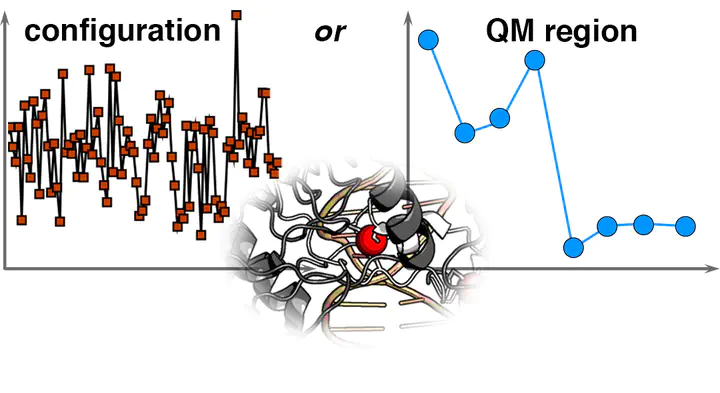Both Configuration and QM Region Size Matter: Zinc Stability in QM/MM Models of DNA Methyltransferase

Abstract
Quantum-mechanical/molecular-mechanical (QM/MM) methods are essential to the study of metalloproteins, but the relative importance of sampling and degree of QM treatment in achieving quantitative predictions is poorly understood. We study the relative magnitude of configurational and QM-region sensitivity of energetic and electronic properties in a representative Zn2+ metal binding site of a DNA methyltransferase. To quantify property variations, we analyze snapshots extracted from 250 ns of molecular dynamics simulation. To understand the degree of QM-region sensitivity, we perform analysis using QM regions ranging from a minimal 49-atom region consisting only of the Zn2+ metal and its four coordinating Cys residues up to a 628-atom QM region that includes residues within 12 Å of the metal center. Over the configurations sampled, we observe that illustrative properties (e.g., rigid Zn2+ removal energy) exhibit large fluctuations that are well captured with even minimal QM regions. Nevertheless, for both energetic and electronic properties, we observe a slow approach to asymptotic limits with similarly large changes in absolute values that converge only with larger (ca. 300-atom) QM region sizes. For the smaller QM regions, the electronic description of Zn2+ binding is incomplete: the metal binds too tightly and is too stabilized by the strong electrostatic potential of MM point charges, and the Zn–S bond covalency is overestimated. Overall, this work suggests that efficient sampling with QM/MM in small QM regions is an effective method to explore the influence of enzyme structure on target properties. At the same time, accurate descriptions of electronic and energetic properties require a larger QM region than the minimal metal-coordinating residues in order to converge treatment of both metal-local bonding and the overall electrostatic environment.